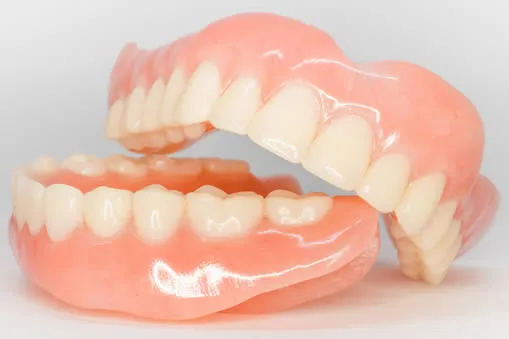Tooth Colored Fillings
Tooth colored dental fillings, also known as composite fillings, are a popular alternative to traditional metal amalgam fillings. Made of a mixture of resin and finely ground glass-like particles, these tooth-colored fillings offer a more natural appearance and can blend seamlessly with the surrounding teeth. Tooth colored fillings are often used to restore decayed, chipped, or cracked teeth, as well as to replace old metal fillings for aesthetic reasons. With their durable and long-lasting properties, tooth colored fillings have become a popular choice for many individuals seeking a discreet and effective way to restore their teeth.
What is a cavity?
Cavities are a common dental issue that refers to the presence of holes in teeth, caused by decay. Typically, the surrounding area of the cavity will appear dark brown or gray. Bacteria in your mouth, found in plaque, are the main culprits of cavities. These bacteria interact with carbohydrates and sugars in your food, creating an acidic environment that dissolves the protective enamel on the outer layer of your tooth. Once the enamel is compromised, the softer dentin layer is exposed, leading to the formation of a cavity. If left untreated, the decay process will quickly progress and spread deeper into the tooth. It’s essential to maintain good oral hygiene, such as brushing and flossing regularly and avoiding sugary foods, to prevent cavities and other dental problems.
What are composite fillings?
Composite fillings are a popular choice for those seeking a dental restoration that blends seamlessly with their natural teeth. These fillings are made of a combination of plastic and glass particles, providing a durable and aesthetically pleasing solution. After the decay has been removed, a cleansing gel is applied, followed by a bonding solution and the composite material. To harden the composite, a high-intensity blue light is used, which only takes a few seconds. Once the filling is complete, the dentist will check to ensure the proper shape and appearance, making any necessary adjustments to achieve a natural-looking result. With composite fillings, you can enjoy a seamless restoration that matches the natural color of your teeth.
Composite Fillings vs Metal Amalagram
Tooth colored fillings, also known as composite fillings, offer several benefits over amalgam fillings:
Aesthetics: Tooth colored fillings are made of a tooth-colored resin material that can be matched to the natural color of your teeth, making them virtually invisible. In contrast, amalgam fillings are silver or gray in color, which can make them more noticeable, particularly in the front teeth.
Bonding: Tooth colored fillings bond directly to the tooth structure, creating a tight seal that helps to prevent further decay. In contrast, amalgam fillings do not bond as well to the tooth structure and require the removal of healthy tooth structure to hold them in place.
Preservation of Tooth Structure: Since tooth colored fillings bond directly to the tooth structure, less healthy tooth structure needs to be removed during the preparation process. This means that more of the natural tooth can be preserved, which is important for long-term dental health.
Durability: While amalgam fillings have been used for many years and are known for their durability, tooth colored fillings have also been shown to be durable and long-lasting. With proper care, composite fillings can last for many years.
Safety: There are concerns about the safety of amalgam fillings due to the presence of mercury. While the American Dental Association maintains that amalgam fillings are safe, some individuals prefer to use alternative materials, such as tooth colored fillings.
Ultimately, the choice between tooth colored fillings and amalgam fillings depends on the individual’s preferences, the location and extent of the decay or damage, and the dentist’s recommendation. We can help you choose the best option for your needs and preferences.
Replacing Metal Filling with Composite Fillings
If you’re considering replacing your amalgam fillings with composite fillings, it’s important to talk with our dentist about your options. While composite fillings offer several benefits over amalgam fillings, every individual’s situation is unique, and we can help you decide whether composite fillings are the right choice for you. With their aesthetic benefits, preservation of tooth structure, and bonding capabilities, composite fillings can provide a durable and natural-looking restoration for your teeth. Schedule a dental appointment today to discuss your options.
ADDITIONAL FREQUENTLY ASKED QUESTIONS ABOUT COMPOSITE FILLINGS
Are composite fillings safe?
Yes, composite fillings are safe and have been used by dentists for many years as a safe alternative to traditional amalgam fillings.
Do composite fillings require any special care?
Composite fillings don’t require any special care beyond regular brushing and flossing. However, it’s important to avoid biting down on hard objects or using your teeth as tools to prevent damage.
Do composite fillings look natural?
Yes, composite fillings are designed to blend in with the color of your natural teeth, making them virtually invisible.
Is there a dentist near me in Conyers that offers composite fillings?
Yes. At our Conyers dental office we offer composite fillings to patients from Conyers and the surrounding area. Contact our office today to schedule an appointment.
Helpful Related Links
- American Dental Association (ADA). Glossary of Dental Terms.
- American Academy of Cosmetic Dentistry® (AACD). Home Page.
- WebMD. WebMD’s Oral Care Guide.




















